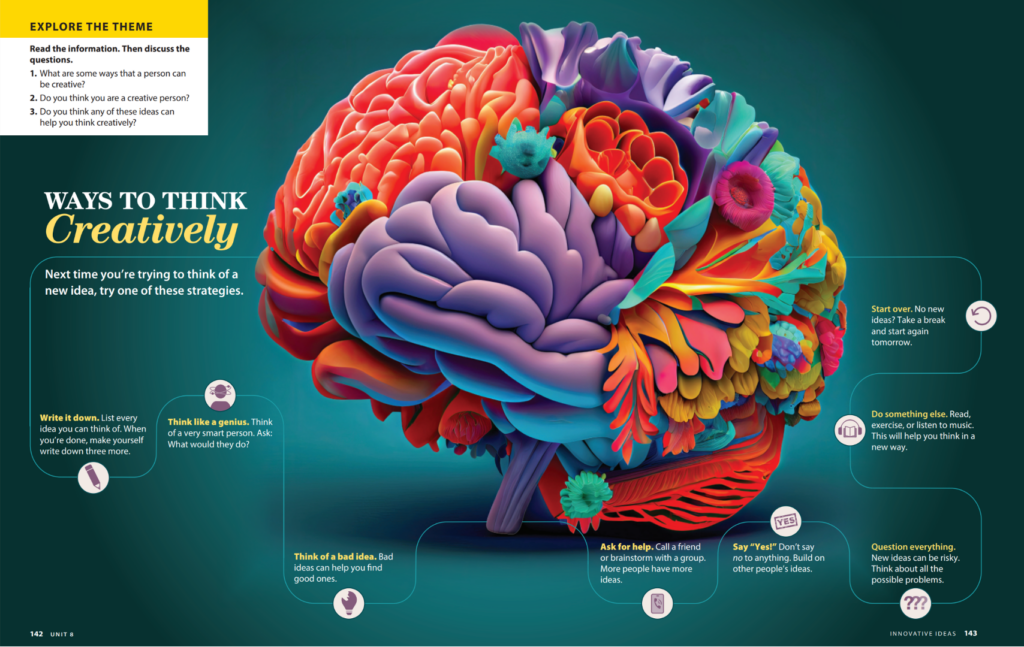If you already have experience teaching English to college and university-aged students, you’ll understand that we can develop their academic skills alongside their language skills. Note-taking, listening to lectures, research skills, and giving presentations are all skills needed to operate in a demanding educational environment. But is it enough to prepare students for the world beyond? It’s common to read news reports of surveys and interviews with employers who complain that too many graduates are leaving university without the employability skills needed for the real workplace.
As English teachers, we are in a key position to develop our students’ employability skills in addition to academic skills. “But hang on!” I hear you say. “How can we possibly include employability skills on our course programs in addition to English and academic skills?” I sympathize with this response, but before we throw out the idea, let’s define what we mean by employability skills.
There are various lists of employability skills from different sources (see reference for a selection). Sean Bermingham, an editor at National Geographic Learning, has conducted research on how many times these employability skills show up in studies and reports. His research is ongoing, but here are his current top 15 employability skills:
- Communication
- Creativity
- Adaptability
- Collaboration skills
- Time and Self management
- Leadership
- Critical thinking
- Problem solving
- Emotional intelligence
- Digital literacy
- Resilience/Grit
- Active learning skills
- Decision-making
- Data/Information literacy
- Negotiation and Persuasion
For anyone designing a course to include employability skills, this list provides a useful starting point. When I’ve shown it to teachers of ‘English for Academic Purposes’ (EAP), they have noted that many of the skills are also useful in the academic context as well as in the professional workplace. Typically, skills such as communication, creativity, and collaboration are common to both, but arguably, employability skills such as adaptability and time management could also be viewed as necessary academic skills.
If you are wondering how to approach integrating employability skills into your lesson, I suggest the following 5-stage approach. Each stage is illustrated with a practical example from Pathways, a bestselling academic skills series from National Geographic Learning.
1. Make the skill the topic of the lesson
Why not make the skill itself the subject of the lesson? It provides you with an engaging topic to start off with and introduces useful language. For example, the image below is how a unit in Pathways introduces the topic of ‘Creativity’. It’s a great way to get students thinking about the skill and the language they will need to talk about it.
2. Provide models (or role models) of the skill
It really helps if students can see the skill in action. For example, if you wanted to have students collaborate in a group discussion, it’s useful to play a recording of such a meeting. If you use National Geographic Learning materials, you’ll know that we often feature National Geographic Explorers who act as ‘role models’ of some skills. Take the skill of resilience and grit; you could read about an Explorer who demonstrated grit to achieve their goal. On the other hand, it’s also good to show ‘everyday people’ modeling a skill. The following video extract comes from Pathways and follows Jessica, who has a stammer, as she attends a course in which she has to give a presentation at the end. A video like this one is an inspiring way to model what ‘grit’ looks like, and it can motivate the students themselves to develop their own grit while learning a language.
3. Controlled practice of language and strategies
If stages 1 and 2 encourage students to learn and talk about the skill, stages 3 and 4 are for students to do the skill. They will need to use certain key language and also develop strategies. In this next extract from Pathways, students begin learning a set of useful phrases to help them tell stories (a sub-skill of communication skills).
In addition to that, they also have to plan their story by following a four-step structure. They make notes in this table before they finally tell their story.
In this case, they prepare a story about a moment when food was important in their lives; for example, at a traditional family gathering. Afterwards, they can apply the same skills to any kind of storytelling, such as describing the story of a company or business.
4. Experience the skill
This stage is similar to stage 3, as students use their language and skills, but much more freely. There is less control. Typically, this might represent a group task in which students collaborate to prepare and give a presentation together. Or perhaps some kind of extended project work. Often such tasks actually develop more than one skill.
The following task comes from the end of a Pathways unit in which students always have the choice of two optional tasks. The main focus is on collaboration, but such task-based discussion activities often encourage other skills such as time management, problem solving, and decision-making.
5. Assess the skill
In the same way we assess language, we can also assess a student’s performance of a skill. In the example below, I have designed a set of criteria to assess the performance of a whole group in carrying out a task that requires effective communication skills. I could listen to the group speaking and use the assessment criteria to give them a score. But notice that in this case my scoring system is designed for the students as a group to self-assess their performance after they have completed the task. I find that this kind of self-assessment task hands responsibility over to the students and indirectly helps to develop skills such as critical thinking and emotional intelligence.
Conclusion
Hopefully, you can see that the distance between academic skills and employability skills is not too wide. In fact, there is a great deal of commonality between the two. Once you have identified which skills you want to integrate into your English language classroom, why not make them the subject of an entire lesson in which students learn about, practice, and experience the skills with key language and strategies?
Watch John’s webinar, ‘Creating Pathways Between Academic and Employability Skills’, for more examples of integrating employability skills into classroom instruction!
Prepare your students for academic and career success with Pathways, Third Edition!
References and further reading
The following report is typical of the calls from the business world for graduates to leave with employability skills: https://www.forbes.com/sites/bryanrobinson/2024/06/17/2024-graduates-lack-skills-in-communication-collaboration-and-critical-thinking-study-finds/
This report from McKinsey lists 56 ‘foundational skills’ for employees and provides a useful reference for designing a syllabus: McKinsey & Company (2021) Defining the skills citizens will need in the future world of work https://www.mckinsey.com/industries/public-and-social-sector/our-insights/defining-the-skills-citizens-will-need-in-the-future-world-of-work








